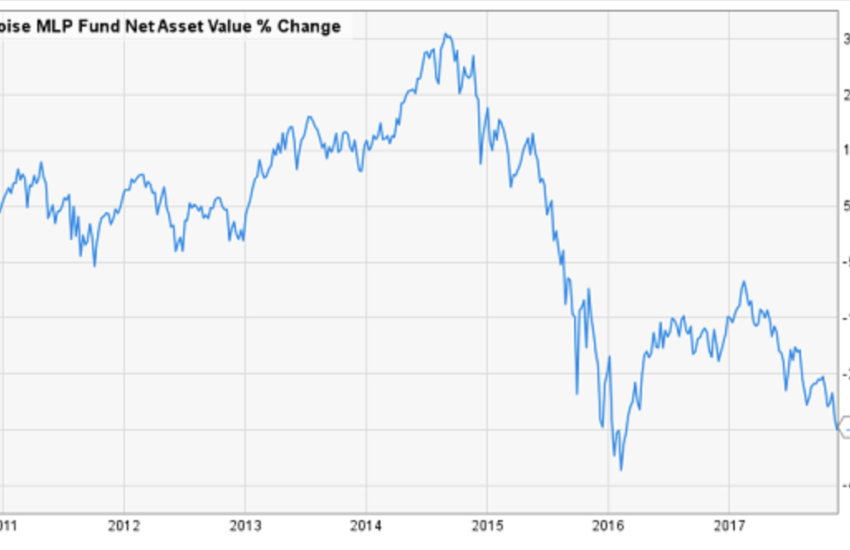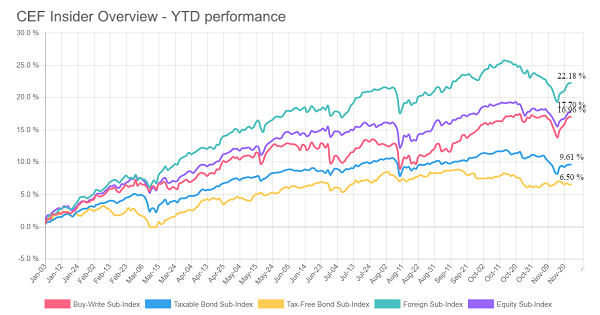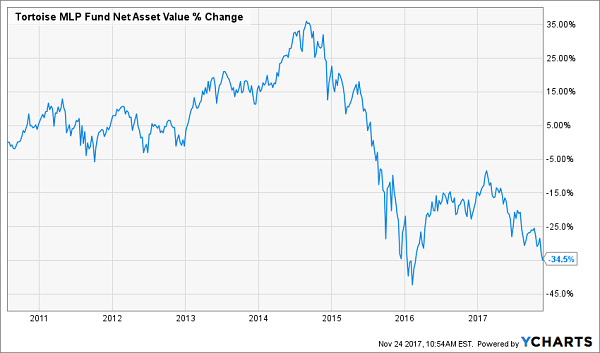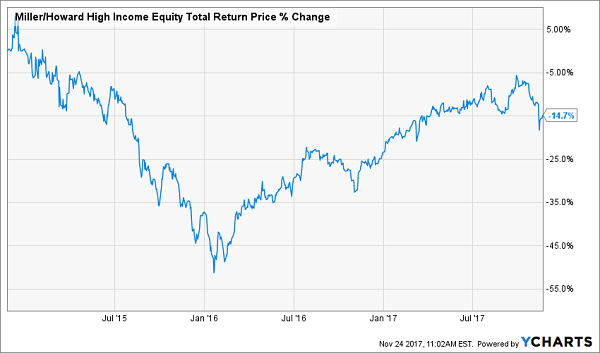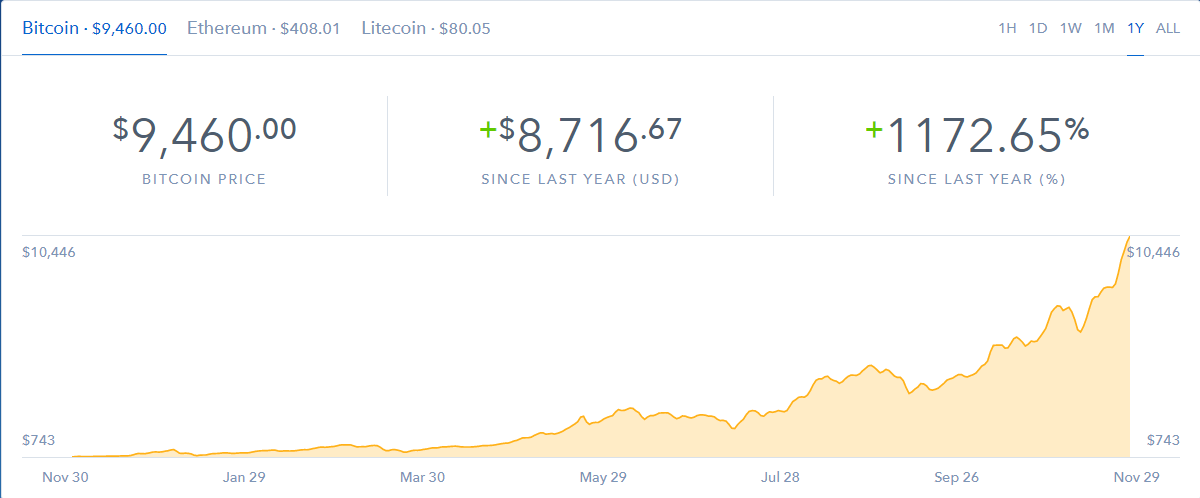As the tech sector has slid recently, red-hot Take-Two Interactive Software Inc (NASDAQ:TTWO) stock has been punished.
TTWO stock has fallen from a near $120 high to just over $100 in a few days. That is a pretty big sell-off that wiped out essentially all of the stock’s gains from the prior 2 months.
Alongside the rest of the tech sector, TTWO stock is rebounding some. TTWO stock now trades near $108. But it’s still far from its recent $120 highs.
Does that mean that this rebound in TTWO stock will continue? I think so. Here’s why.
Tech Is In Rebound Mode
Tech names were beaten up last week and early this week as a rotational trade gripped the markets. With tax reform, strong retail earnings, and positive Black Friday numbers in focus, investors ditched the hyper-growth tech beauties which have led the market for so long in favor of more traditional value investments.
In other words, TTWO stock sold off in dramatic fashion without anything being wrong with the fundamental growth narrative. Same with other hyper-growth tech names.
But these growth narratives are really, really strong. After all, there is a reason many of these hyper-growth stocks have continued to roar higher for so long. At most of these companies, growth simply isn’t slowing, nor is it showing any signs of slowing any time soon.
Consequently, I’ve been buying this big dip in tech, including gobbling up Alphabet Inc (NASDAQ:GOOG, NASDAQ:GOOGL), Amazon.com, Inc. (NASDAQ:AMZN), Facebook Inc (NASDAQ:FB), Alibaba Group Holding Ltd (NYSE:BABA), and Netflix, Inc. (NASDAQ:NFLX), among others.
Add TTWO stock to that list.
TTWO Stock Is In Rebound Mode
TTWO stock has long been one of my favorites in the tech sector.
Towards the end of May, I said TTWO stock was a buy based on its robust, unparalleled content portfolio in the video game industry. That portfolio, which includes names like Grand Theft Auto, Red Dead, NBA 2K, WWE 2K, and Civilization, sets the company up to succeed in a long-term window.
That buy thesis remains largely unchanged today. A strong content portfolio isn’t a near-term tailwind: It’s a long-term tailwind. TTWO can continue to pump out GTA, Red Dead, and NBA 2K sequels into perpetuity and, as long as each iteration offers some unique value prop, demand won’t lessen.
Don’t believe me? Just look at the data.
The first game in the Grand Theft Auto series was released in 1997. Twenty years later, Grand Theft Auto V is the best-selling video of all-time, both in terms of revenue and units sold.
The first NBA 2K game was released in 1999 (published by Sega.) Eighteen years later, NBA 2K17 is Take-Two’s highest-selling sports title ever, while NBA 2K18 is expected to perform even better than NBA 2K17.
Fans simply don’t bore of these titles. Demand remains robust for every sequel.
TTWO Stock Valuation
Consequently, TTWO is a buy and hold so long as the valuation remains reasonable.
Today, the valuation on TTWO stock is very reasonable. TTWO stock is expected to grow earnings around 22% per year over the next two years, but the stock only trades at 34.8x this year’s earnings estimate. That means TTWO stock is trading at a mere 60% premium to its growth prospects.
The S&P 500, meanwhile, trades at a 100% premium to its growth prospects (20x this year’s earnings for about 10% growth).
Clearly, the recent dip in TTWO has plunged the stock into materially undervalued territory.
Bottom Line on TTWO Stock
Hyper-growth tech names will rebound from this recent sell-off. This is a “buy the dip” opportunity in many different stocks.
One stock that looks particularly attractive here is TTWO, given its robust growth narrative and cheap valuation.
I continue to believe TTWO stock is a hold into 2019, which is expected to be a banner year for the company with multiple big game launches.
Can a $10 Bill Really Fund Your Retirement? The digital currency markets are delivering profits unlike anything we’ve ever seen. 23 recently doubled in a single week. And some like DubaiCoin have jumped as much as 8,200X in value in 18 months. It’ unprecedented... but you won’t receive any of the rewards unless you put a little money in the game. Find out how $10 could make you rich HERE.
Source: Investor Place




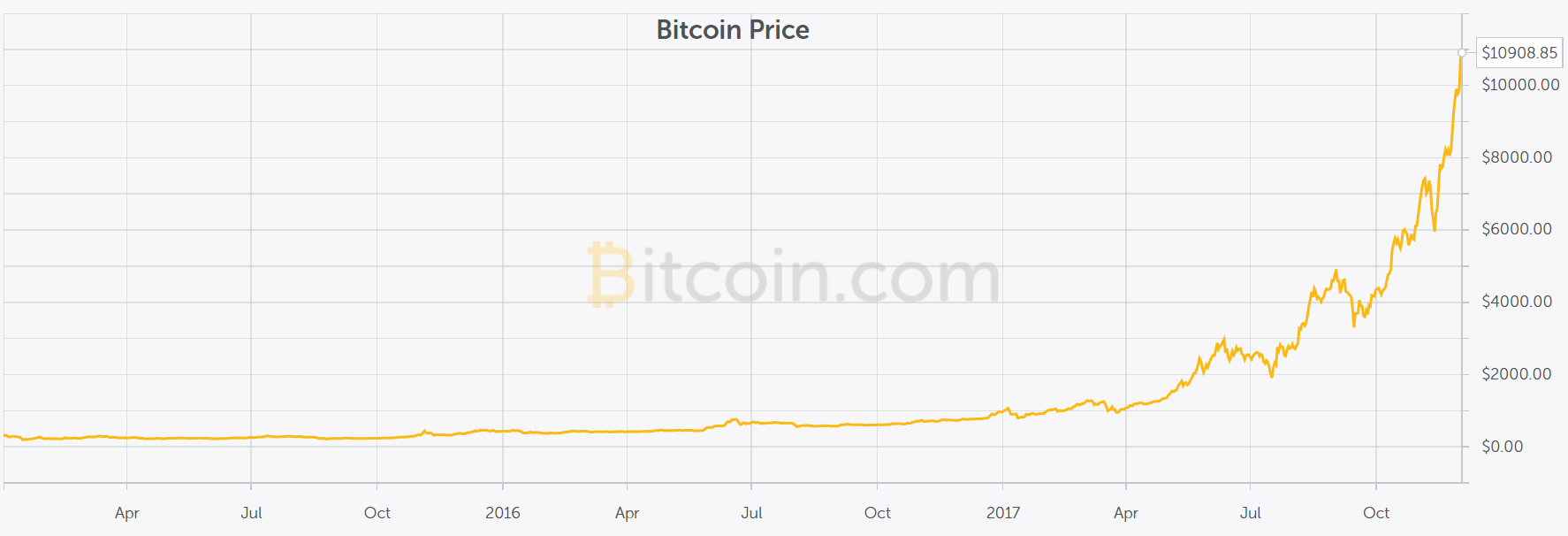
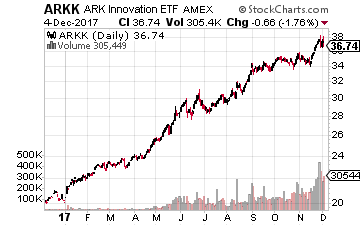 One very conservative way is through an exchange traded fund – the Ark Innovation ETF (NYSE: ARKK). The goal of this fund is to provide investors like you with exposure to innovation and new technologies across a broad range of sectors. The ARKK ETF owns a position in the aforementioned Bitcoin Investment Trust. The Bitcoin Investment Trust is the number one position in its current 53 stock portfolio and it makes up 6.79% of the overall ARKK investment portfolio. In other words, any major selloff (noted short seller Andrew Left is short GBTC) won’t devastate the fund.
One very conservative way is through an exchange traded fund – the Ark Innovation ETF (NYSE: ARKK). The goal of this fund is to provide investors like you with exposure to innovation and new technologies across a broad range of sectors. The ARKK ETF owns a position in the aforementioned Bitcoin Investment Trust. The Bitcoin Investment Trust is the number one position in its current 53 stock portfolio and it makes up 6.79% of the overall ARKK investment portfolio. In other words, any major selloff (noted short seller Andrew Left is short GBTC) won’t devastate the fund. 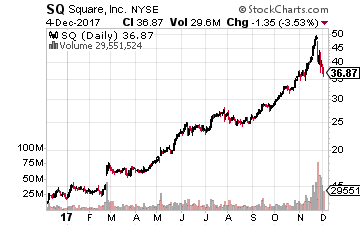
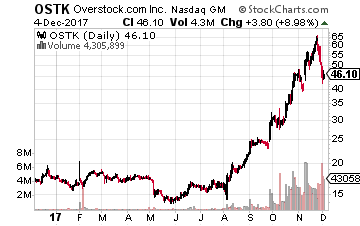

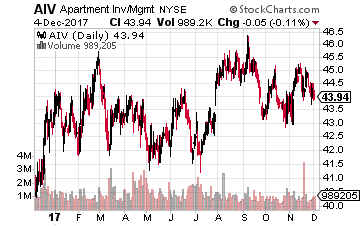 Apartment Investment and Management (NYSE: AIV) is a mid-cap sized REIT that owns and operates about 140 apartment communities. About 40% of the company’s properties are in coastal California, with the balance spread across major U.S. metropolitan areas. Last year, AIV increased its dividend by 9.0%. Cash flow growth has been comparable in 2017, and I forecast an 8% to 10% dividend increase in January. The new dividend rate announcement will come out in late January with a mid-February ex-dividend date and payment at the end of February. AIV yields 3.3%.
Apartment Investment and Management (NYSE: AIV) is a mid-cap sized REIT that owns and operates about 140 apartment communities. About 40% of the company’s properties are in coastal California, with the balance spread across major U.S. metropolitan areas. Last year, AIV increased its dividend by 9.0%. Cash flow growth has been comparable in 2017, and I forecast an 8% to 10% dividend increase in January. The new dividend rate announcement will come out in late January with a mid-February ex-dividend date and payment at the end of February. AIV yields 3.3%.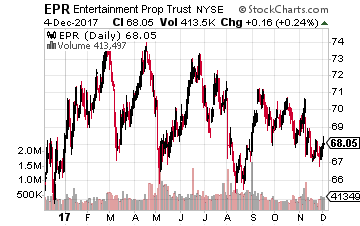 EPR Properties (NYSE: EPR) focuses its real estate investments in three different business sectors. Primary is the ownership and triple-net leasing of entertainment complexes and multiplex theaters. The second sector is the ownership of golf and ski recreation centers, also triple-net leased. The third sector is the construction, ownership and leasing of private and charter schools. EPR pays monthly dividends, and has grown the dividend rate by an average of 7% per year for the last six years. In 2017 the company was active in both acquisitions and new developments. The new dividend rate is announced in mid-January, with an end of January record date and mid-February payment. EPR currently yields 6.0%.
EPR Properties (NYSE: EPR) focuses its real estate investments in three different business sectors. Primary is the ownership and triple-net leasing of entertainment complexes and multiplex theaters. The second sector is the ownership of golf and ski recreation centers, also triple-net leased. The third sector is the construction, ownership and leasing of private and charter schools. EPR pays monthly dividends, and has grown the dividend rate by an average of 7% per year for the last six years. In 2017 the company was active in both acquisitions and new developments. The new dividend rate is announced in mid-January, with an end of January record date and mid-February payment. EPR currently yields 6.0%.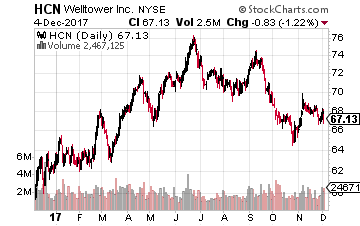 Welltower Inc (NYSE: HCN) is a large cap healthcare sector REIT. The company owns interests in properties concentrated in markets in the United States, Canada and the United Kingdom. The portfolio is divided into three segments consisting of: Seniors housing and post-acute communities, and outpatient medical properties. Triple-net properties include independent living facilities, independent supportive living facilities, continuing care retirement communities, assisted living facilities, care homes with and without nursing, Alzheimer’s/dementia care facilities, long-term/post-acute care facilities and hospitals. Outpatient medical properties include outpatient medical buildings. Welltower has increased its dividend every year since 2009, with a modest 1.2% increase to start 2017. I expect a 2.0% to 2.5% increase to be announced in January. The announcement will come out at the end of the month, with an early February record date and payment around February 20. The stock yields 5.1%.
Welltower Inc (NYSE: HCN) is a large cap healthcare sector REIT. The company owns interests in properties concentrated in markets in the United States, Canada and the United Kingdom. The portfolio is divided into three segments consisting of: Seniors housing and post-acute communities, and outpatient medical properties. Triple-net properties include independent living facilities, independent supportive living facilities, continuing care retirement communities, assisted living facilities, care homes with and without nursing, Alzheimer’s/dementia care facilities, long-term/post-acute care facilities and hospitals. Outpatient medical properties include outpatient medical buildings. Welltower has increased its dividend every year since 2009, with a modest 1.2% increase to start 2017. I expect a 2.0% to 2.5% increase to be announced in January. The announcement will come out at the end of the month, with an early February record date and payment around February 20. The stock yields 5.1%.

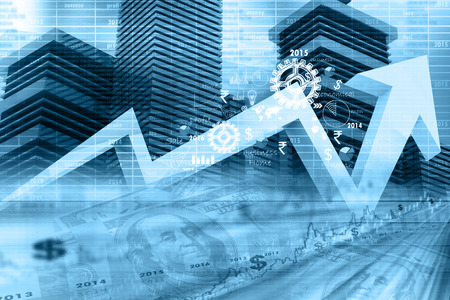
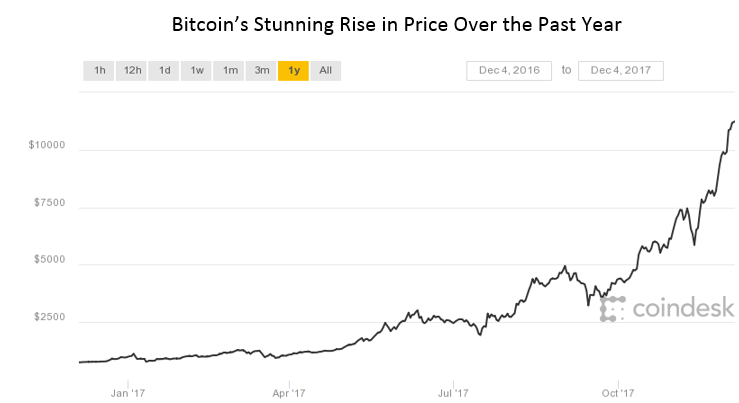
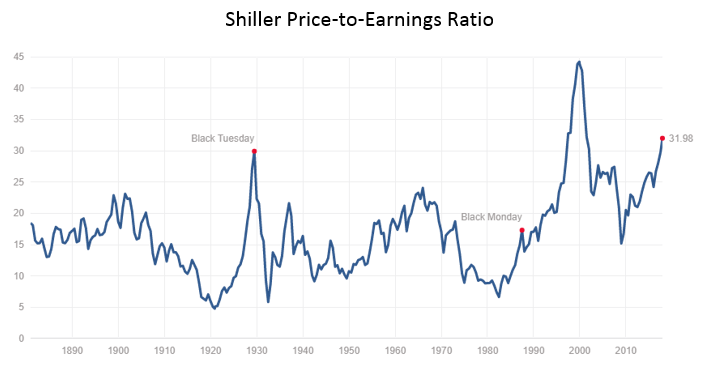

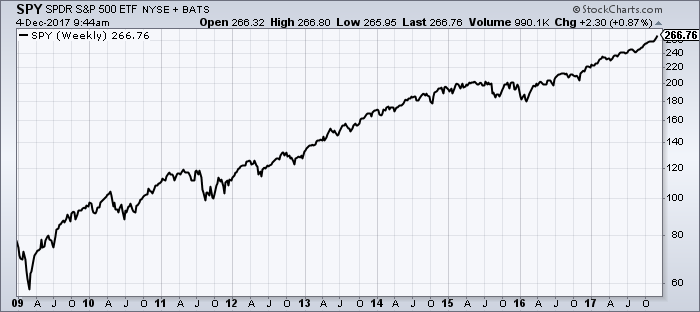



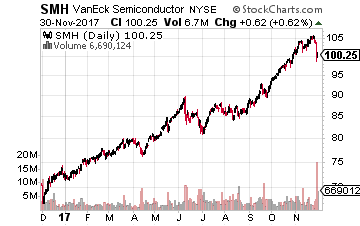 The first and the broadest way you can invest in semiconductors is the MarketVectors Semiconductor ETF (NYSE: SMH). It owns 26 of the world’s top semiconductor-related companies such as Intel. The only major stock not in this portfolio is Samsung. This ETF has, of course, done very well for its holders. It has soared over 50% over the past year and is up about 42% year-to-date.
The first and the broadest way you can invest in semiconductors is the MarketVectors Semiconductor ETF (NYSE: SMH). It owns 26 of the world’s top semiconductor-related companies such as Intel. The only major stock not in this portfolio is Samsung. This ETF has, of course, done very well for its holders. It has soared over 50% over the past year and is up about 42% year-to-date.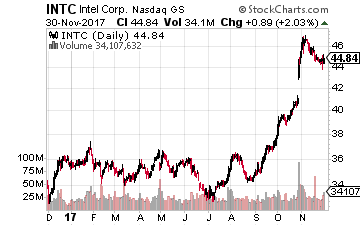
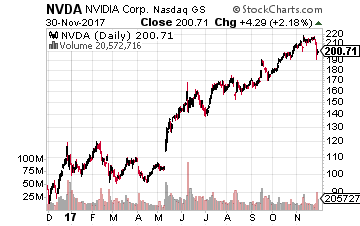
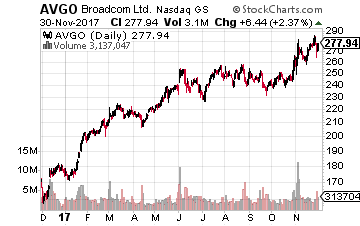 Next up is Broadcom (Nasdaq: AVGO), which is currently attempting to take over rival Qualcomm. Its stock is up 55% year-to-date and about the same amount over the past year.
Next up is Broadcom (Nasdaq: AVGO), which is currently attempting to take over rival Qualcomm. Its stock is up 55% year-to-date and about the same amount over the past year.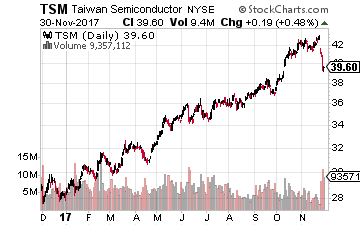 Finally, we come to Taiwan Semiconductor (NYSE: TSM), whose stock is up 37% year-to-date and about 33% over the last 12 months.
Finally, we come to Taiwan Semiconductor (NYSE: TSM), whose stock is up 37% year-to-date and about 33% over the last 12 months.